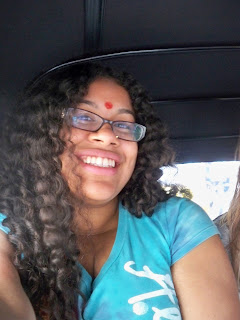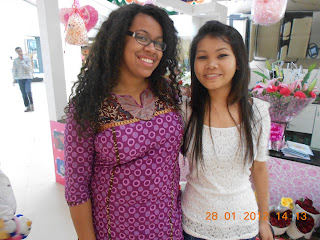Visiting the government hospital, Kamala Nehru, was an eye opening experience because it was not what I expected. In America, we do not have Public Hospitals and the words “public”, “welfare”, and “government run” are equated to poor quality. Therefore, I expected the hospital to be unhygienic, crowded, and disorderly. However, I was pleasantly surprised. I am glad we had the opportunity to speak to doctors as well as ask them questions because it brought the statistics we discussed in class and read to life. The tour was phenomenal because it gave me the ability to learn in a more interactive way. Overall, I felt like the visit was a positive one because the hospital was inexpensive, clean, organized, and had updated technology, with capable physicians and a wide variety of services.
I learned that Kamala Nehru Hospital was managed by the Pune Municipal Corporation. In other words, the state provides the funding for the services administered by the hospital. It was interesting to learn that the historical reason that states have control is because the constitution of India decentralized health services. I assert that this decision was a positive one, because each state will have different health issues due to the diverse climate, culture, and natural resources, and the states can therefore implement the programs they see fit.
I was very much surprised by the wide array of services offered by the hospital. The services including maternal care, major and minor operations, skin care, deliveries, family planning, mammography, X-rays, dentistry, immunization, urban health programs, counseling, slum outreach and a pharmacy to name a few. From my experience, an individual in America would have to visit different facilities and would not be able to obtain all the services in the same location. I think it is genius to have a pharmacy within the hospital. It is convenient for patients to be able to obtain affordable medication without having to travel because the families who normally utilize the government hospitals probably do not have enough money to take a rickshaw from home to the doctor and then to a pharmacy and again to go home. This is not a convenience found in hospitals in New York or Philadelphia. In addition, I was also very impressed by the hospital’s policy to treat all patients without any discrimination based on caste, skin color, socioeconomic status, religion, gender, or sexual orientation. Due to the importance of caste, socioeconomic status and religion, I anticipated that the services would be segregated based upon these different factors.
During our class lecture, we discussed the statistic that 18-20% of the population utilizes government hospitals because patients feel that physicians are rude. However, after my visit I was still honestly perplexed. I still do not understand why 82-80% of the population prefers to pay high prices for the same services at private hospitals. For example, the cost of a major surgery is 300 rupees at a government hospital and it costs about 30,000 rupees in the private sector. A doctor’s visit and the medication for two days cost about 5 rupees, which equates to about 10 American cents. Additionally, the cost of a minor surgery is 75 rupees and the cost of a delivery is 100 rupees. I was thrilled to learn that individuals who earn less than 100,000 rupees or live in an authorized slum have the option of paying 100 rupees yearly for family medical coverage as long as paperwork was provided. Moreover, I was pleasantly surprised to find out that no one is denied medical care because those who do not have money are treated free of charge. Furthermore, I was impressed by India’s efforts to promote health by providing free services to individuals because it is such a daunting task. In the United States, medical costs are a major reason why families fall into debt. We have government programs such as Medicaid and Medicare, but such programs are always under threat of being cut by the government. I admire the Indian government’s commitment to improving health facilities since India is so populated.
Two additional features that impacted me in a positive manner are the slum outreach and the immunization programs. I was excited that the slum outreach programs cater to the needs of those in both “official” and “unofficial” slums. They are provided with family welfare services and the growth of children was monitored because this is the population that needs the most help. It is phenomenal that protein and iron supplements are given to children who are undernourished. However, I assert that 1 full-time trained nurse and 4 auxiliary nurses are not enough staff for 8,000-10,000 individuals. I propose that more full-time nurses and doctors should be hired to work under this program. Lastly, India’s immunization program has been successful because approximately 94% of children have been vaccinated free of charge. I assert that this is a tremendous investment because it is a preventative measure.
I assert that the family welfare program is positive for multiple reasons. Firstly, I am glad that couples are provided with several options, including sterilization, oral contraceptives, condoms and emergency contraceptives because each family’s circumstance is different and their plan should address their individual needs. However, I found it interesting that the government incentivizes sterilization by paying men and women 1,100 rupees if they get a vasectomy or a tubectomy because this would not happen in America. Also, I was relieved to learn that there are government counselors trained to assist couples as they make this crucial decision. Secondly, I like that women have access to contraception because I believe they should have control over their reproductive health. Thirdly, family planning allows families to have as many children as they can afford because feeding, sheltering, clothing, and educating a child requires a great deal of resources. Lastly, family planning will help to reduce India’s high population density. Overall, I thought the experience was a positive one.
Although my overall experience was positive, there were also issues that impacted me in a negative ways. First, I was struck by the apparent lack of confidentiality. I was surprised to see 30 beds with about two feet and a curtain separating them in the woman’s ward. I was even more shocked when the doctor stated that during times of emergency 60 beds fit in the room. Nevertheless, the lack of privacy is a negative to me but it not a major priority in India due to culture and their high population.
Secondly, I was shocked to learn that only 9% of sexually active youth use condoms because that is a very low percentage and it puts this vulnerable population at risk. I affirm that “Sexual Education Programs” has been effective amongst the educated population, because students are informed about different methods of contraception, sexually transmitted diseases, termination of pregnancy, sterilization, and how health is affected by socio-economic status. I declare that these efforts are positive; however they need to reach the uneducated because they are the most vulnerable. Sexual education programs need to be implemented in areas where unprotected sexual activity is high. Additionally, there are misconceptions about oral contraceptives that sex education can obliterate. For instance, women do not want to take pills because they gain weight and they believe their weight gain makes them infertile.
Otherwise, I was surprised that the hospital still utilized a paper filing system. To improve efficiency, they could implement computerized files or an electronic medium for confidential medical documents as a precautionary measure to prevent the paper files from becoming lost, damaged or destroyed. However, I understand why computerized files have not been employed as the electricity goes out quite often in Pune. The last negative was that 1.7% of India’s GDP is spent on health therefore the hospitals experience a lack of resources. India invests in the health of its citizens by devoting 250 million rupees to the hospital as the annual budget. However, I affirm that more of India’s GDP should be allocated to health because concerns such as malaria, TB, high infant mortality are all issues that plague India.
Kamala Nehru Hospital was an amazing experience. My impressions were overall positive because it was clean, organized, and extremely inexpensive. The hospital had updated technology, with capable physicians and a wide variety of services in one building. Their slum outreach programs, family planning and immunization programs are necessary programs. The hospital was maintained in a better condition than I expected. However, there is always room for growth and improvement. I would advice Kamala Nehru to improve their sexual education programs and perhaps ask the government for more money because they could help more people if their budget was larger.









